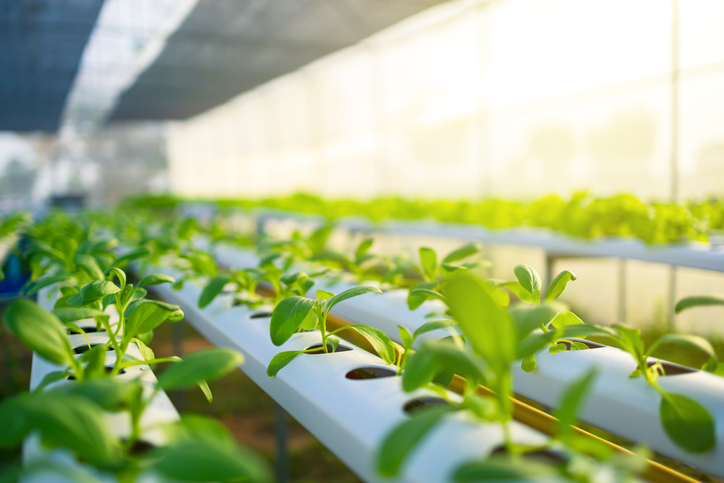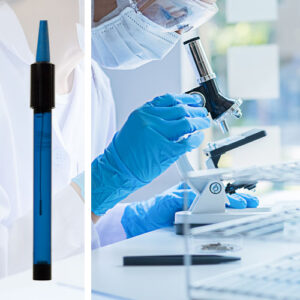Hydroponics refers to growing plants using a water-based nutrient solution rather than soil. This nutrient solution may include an aggregate substrate or growing media like peat moss, vermiculite, coconut coir, or perlite. Initially, this farming system was for studying plant nutrition, hobbyists, and small farmers. However, with declining agricultural lands due to increased population, urbanization, and certain environmental factors, they now serve in large commercial applications. So, optimizing hydroponic systems to maximize productivity is a priority in the agricultural industry.
This article reviews hydroponic water testing, key nutrients, and monitoring solutions that help optimize these systems.
Water Testing for Optimizing Hydroponic Systems
Because water is the base of nutrient supply to plants in hydroponics, it is necessary for it to be of high quality. The water serving in this system should be devoid of impurities such as heavy metals, bacteria, salts, and total dissolved solids. Thus providing a neutral base for precisely regulating the water’s level of nutrients and pH. As a result, reverse osmosis (RO) water is often recommended. Even if RO water is used, testing remains vital to optimizing hydroponic systems. This system has three key variables to test for pH, conductivity, and temperature.
pH
Although pH measures acidity in water, it also indicates how plants respond to hydroponics supplementation. A pH level of 6.5 to 8.5 is ideal for drinking water, but plants grow best within a certain range. For example, most ornamental plants grow well in a pH range of 6.0 to 7.0. Whereas plants like gardenias, blueberries, and camellias grow best when pH is between 4.5 and 6.0. Still, others, such as hibiscus chrysanthemum, verbena, and junipers, can tolerate a relatively high pH of up to 8.0. Because of this disparity among plants, it is necessary to always keep a pH guide handy.
Another issue with pH in hydroponic systems is managing change. Typically, plants cannot tolerate a sudden change in pH, which can throw them into shock and harm. So, even when the pH is not ideal for a plant, using homemade solutions like adding lemon or vinegar to reduce the pH is not recommended. The best practice is to use preformulated buffering solutions from manufacturers, which gradually change the pH level. These buffering solutions usually limit pH changes in hydroponic systems to less than 0.5 pH per day, which is ideal.
Conductivity
Electrical conductivity (EC) indicates the amount of salts or nutrients in the water. So, the higher the conductivity value, the more nutrients in the solution. Some plants prefer a high concentration of nutrients, while others prefer a low conductivity. For instance, salt-sensitive plants prefer conductivity values ranging from 1 to 2.6 mS/cm. Whereas heavy feeders like poinsettia and chrysanthemum do well at higher values between 2.6 and 4.6 mS/cm. It is best practice to expose seedlings and young plants to the lower end of their preferred conductivity range. Then, gradually increase the conductivity by adding more nutrients as the plant grows.
Another reason for monitoring EC values in hydroponic systems is that excess salts can accumulate and block the pipes. This is especially true in hot grow tents where water evaporation can leave behind extra salts. Continuous conductivity monitoring can help farmers decide when to dilute the water by adding distilled water or more nutrients to increase conductivity.
Temperature
Temperature is another key parameter that requires continuous monitoring when optimizing hydroponic systems. Generally, the ideal water temperature for most plants lies between 65 and 72℉. However, some plants require specific temperature ranges to flower, bud, and grow. Similar to pH, it is best practice to apply a gradual change to water temperature rather than a sudden one. As a result, never add boiling or freezing water to your system, as it can destroy roots and throw plants into a shock.
Apart from these three major parameters, it may be necessary to test hydroponic water for other parameters as follows:
-
- Cloudiness.
-
- Color.
-
- Odor.
-
- Slimes/algae.
Nutrients for Optimizing Hydroponic Systems
Because they lack soil, hydroponic systems rely on nutrient solutions to provide plants with essential elements. Unlike most plant food, hydroponic fertilizers must contain the entire spectrum of essential nutrients, which are categorized into macronutrients and micronutrients. Plants require higher amounts of macro nutrients like carbon, hydrogen, and oxygen than micronutrients like iron, manganese, and zinc. The following table highlights these essential nutrients and their role in plant development.
| Nutrient | Source | Approximate Content in Plants (% Dry Weight) | Roles in Plant |
| Carbon, Hydrogen, and Oxygen | Carbon Dioxide and water | 90+% | Components of organic compounds |
| Nitrogen | Nitrate (NO3–) and ammonium (NH4+) | 2-4% | Component of amino acids, proteins, coenzymes, nucleic acids |
| Sulfur | Sulfate (SO42-) | 0.5% | Component of sulfur amino acids, proteins, coenzyme A |
| Phosphorus | Dihydrogen phosphate (H2PO4–), Hydrogen phosphate (HPO42-) | 0.4% | ATP, NADP intermediates of metabolism, membrane phospholipids, nucleic acids |
| Potassium | Potassium (K+) | 2% | Enzyme activation, turgor, osmotic regulation |
| Calcium | Calcium (Ca2+) | 1.5% | Enzyme activation, signal transduction, cell structure |
| Magnesium | Magnesium (Mg2+) | 0.4% | Enzyme activation, component of chlorophyll |
| Manganese | Manganese (Mn2+) | 0.02% | Enzyme activation, essential for water splitting |
| Iron | Iron (Fe2+) | 0.02% | Redox changes, photosynthesis, respiration |
| Molybdenum | Molybdate (MoO42-) | ﹤0.01% | Redox changes, nitrate reduction |
| Copper | Copper (Cu2+) | ﹤0.01% | Redox changes, photosynthesis, respiration |
| Zinc | Zinc (Zn2+) | ﹤0.01% | Enzyme cofactor-activator |
| Boron | Borate (BO33-) | 0.01% | Membrane activity, cell division |
| Chlorine | Chloride (Cl–) | 0.1-2% | Charge balance, water splitting |
| Nickel | Nickel (Ni2+) | 0.000005-0.0005% | Component of some enzymes, biological nitrogen fixation, nitrogen metabolism |
Nutrient Interaction and Antagonism
When adding nutrients to hydroponic systems, farmers must be mindful of how they interact with each other. If a particular nutrient is in excess, the plant may take it up at a higher amount to the detriment of another nutrient. This phenomenon is referred to as nutrient antagonism. For example, a blueberry nutrient solution could require 170 ppm nitrogen and 120 ppm potassium. If an error leads to the addition of 1700 ppm of nitrogen, the plant will experience potassium deficiency, even with 120 ppm of potassium present. The following table shows common nutrient antagonisms.
| Nutrient | Antagonism with |
| Nitrogen | Potassium |
| Phosphorus | Zinc |
| Potassium | Nitrogen, Calcium, Magnesium |
| Sodium | Potassium, Calcium, Magnesium |
| Calcium | Magnesium, Boron |
| Magnesium | Calcium |
| Iron | Manganese |
Monitoring Solutions for Optimizing Hydroponic Systems
Having the right monitoring solution for your hydroponic system is critical in ensuring plant survival and productivity. Small farmers may get away with using manual monitoring methods. But larger commercial establishments need to deploy more sophisticated systems using sensors. These sophisticated systems enable real-time monitoring of key parameters and the integration of technological advancements like IOT and AI. No matter the monitoring solutions in use, basic components are always present.
pH Meter and Test Kit
Using a pH meter or test kit enables farmers to monitor the level of acidity and alkalinity in hydroponic systems. Test kits are typically cheaper and suit smaller and less critical systems. Whereas pH meters are more expensive and provide real-time measurements that are usually more accurate.
EC Meter
Using an EC/ppm meter allows you to check the purity of your water. This is key, especially for those using non-potable water or having a system where the water is exposed to contaminants.
TDS Meter
A TDS meter measures the total dissolved solids in water. This tells how much nutrients remain after the solution is used on the plants.
Thermometer
A thermometer assesses the water temperature and helps farmers avoid too-high, too-low, and sudden temperature fluctuations.
Timers
Timers and controllers serve to control the water cycles of plants.
Partnering with AlpHa for Hydroponic Systems Measurement Solutions
At AlpHa, various technical specialists are ready to partner with you to develop the right measurement solutions for your hydroponic systems. Our breadth of product offerings includes sensors for measuring key hydroponic parameters like pH, conductivity, and temperature. We also offer multiparameter sondes that offer you a compact solution for measuring several parameters and nutrients all at once. Contact us so that we can begin building that ideal and cost-effective solution for your hydroponic system.




